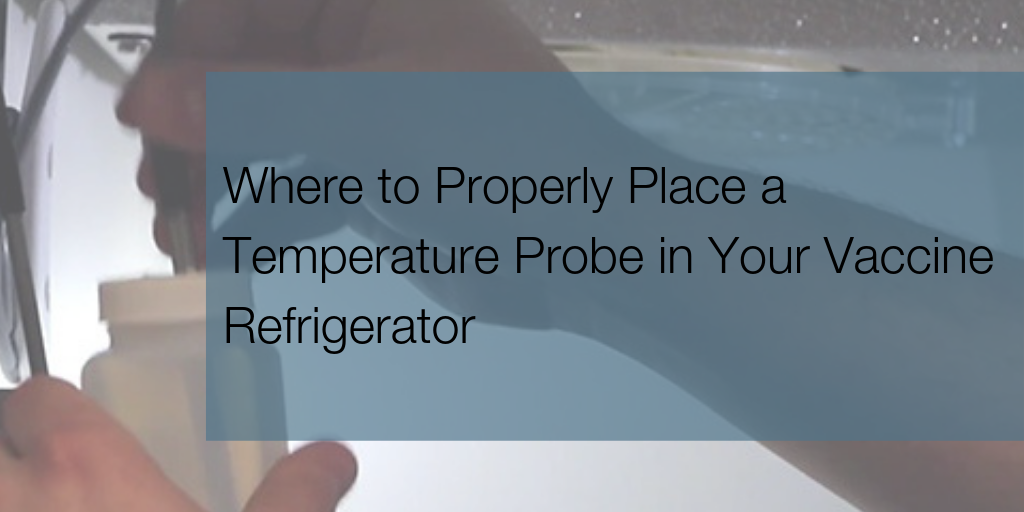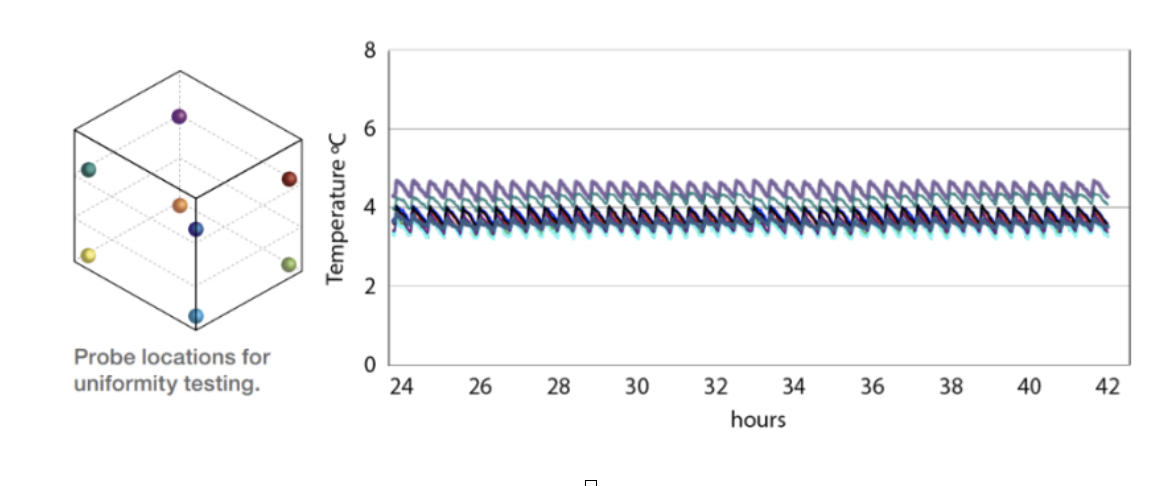
The CDC Vaccine Storage and Handling Toolkit outlines best practices for safely storing and handling your vaccines. One question that often comes up is, “Where is the correct location to position your temperature probe to ensure you are accurately measuring vaccine temperature?” This blog post will explain previous CDC recommendations around probe placement, the 2019 updated recommendations, an explanation around temperature uniformity, and guidance on probe placement in pharmaceutical/purpose-built/medical-grade vaccine refrigerators.
Household Refrigerators
Initially, the CDC recommended placing the temperature probe in the middle of the vaccine storage unit. This recommendation was made because many providers were still using household refrigerators for vaccine storage. Household refrigerators fail to provide a uniform environment, meaning not all areas inside of the refrigerator cabinet maintain the proper temperature to store vaccines.
Household refrigerators are full of hot and cold spots. This poses significant risk to vaccine potency. Because household refrigerators provide the most stable temperature at the center of the unit, the CDC had recommended placing vaccines as well as the temperature probe bottle there. This remains best practice when using a household refrigerator for vaccine storage.
Updated CDC Recommendations
In the updated, 2019 CDC Vaccine Storage and Handling Toolkit, the CDC provides new guidance on where to properly locate the temperature probe in your vaccine storage unit. As more providers continue to move strictly to medical-grade refrigerators for vaccine storage, more guidance is being provided for these types of units.
The toolkit states, “Many purpose-built units have undergone testing and temperature mapping so that the probe is in the most appropriate location (CDC).” Each manufacturer may place the probe in a different location inside of the unit. Temperature uniformity testing ensures that the probe location accurately reflects temperatures throughout the entire vaccine storage unit. Temperature uniformity is explained below.
Temperature Uniformity
Temperature uniformity is the measurement of temperature consistency across all usable locations in the cabinet. Tight uniformity provides confidence that contents are maintained at the correct temperature regardless of storage location. Non-medical-grade equipment may have poor uniformity performance and can include hot and cold spots that cause product to go out of temperature range. This can create both safety and regulatory risks.
Testing should prove that the equipment can maintain required temperature ranges in all locations of the unit. Temperature monitoring should establish that the system is able to maintain proper temperatures consistently and reliably.
Pharmaceutical-grade Refrigerators
Refrigerators designed for vaccine storage should have extremely tight uniformity, meaning all areas of the cabinet should be within one degree from the other areas of the cabinet. Forced-air refrigeration helps achieve this tight uniformity. Helmer scientific places probes in 8 locations for undercounters and 16 probes for uprights across all locations in the refrigerator (back and front of shelves; left, right, and center on shelves; in secure access bins) to test for uniformity. The primary probe is placed in a solid ballast simulator in these evaluations.

Overall uniformity across the Helmer Scientific vaccine refrigerator cabinet is very tight meaning it is safe to store vaccines anywhere throughout the cabinet. For this reason, it is recommended to keep your probe mounted in the location set by the vaccine unit manufacturer. This allows for maximum storage capacity. A probe placed in the default location should read the same as a probe placed in the middle of a pharmaceutical-grade unit. The updated 2019 CDC Vaccine Storage and Handling Toolkit aligns with this recommendation.
For more information on vaccine storage and handling, download our Ultimate Guide to Vaccine Storage. It outlines up-to-date best practices for safely and effectively storing your vaccines in accordance with CDC guidelines and recommendations.
Other Blogs You Might Be Interested In...
- Providers, do your Part in Preventing the Spread of Influenza this Season
- Vaccine Storage: Studies Show that Storing Vaccines within the Correct Temperature Range is Still an Issue
- The CDC Advisory Committee on Immunization Practices Discusses Vaccines
- How to Standardize, Enhance, and Elevate your Vaccine Program




